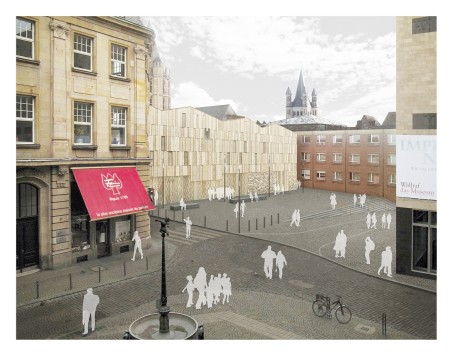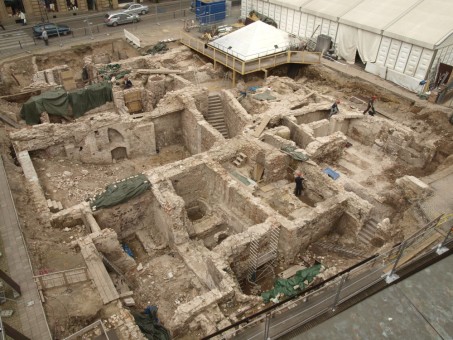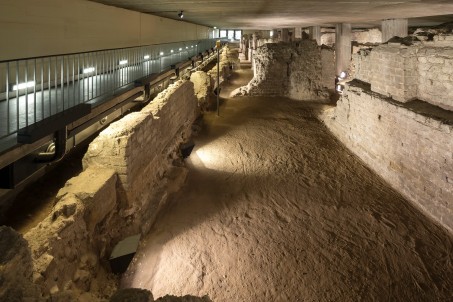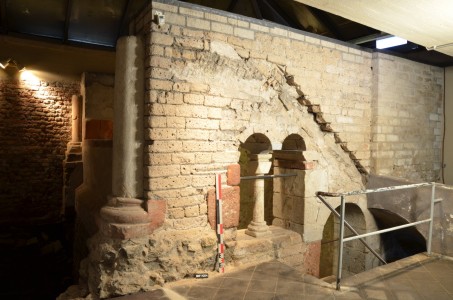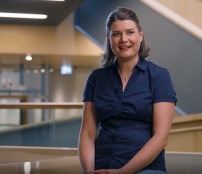The focus of MiQua
About the museum
Two thousand years of history which we can tread, right in the middle of the city! In the new museum on and under the Rathausplatz, unique archaeological and historical finds will be accessible to all. A permanent exhibition beneath the Rathausplatz will show archaeological finds of Europe-wide importance: the Praetorium, the Roman governor's palace; the medieval Jewish quarter; and the Christian goldsmiths' quarter. Beneath the square lie a total of 2000 years of accumulated layers and city walls. And above them stands the new museum building itself, with permanent and temporary exhibitions.
Permanent exhibition under the Rathausplatz
Once the builders withdraw from the site, a 600-metre long path will be revealed, taking the visitor round integrated exhibition areas, reconstructions, cases displaying finds and media stations. Archaeological monuments will come to life, enabling us to imagine and understand them better. The permanent exhibition, besides showing off the walls to great effect, will illustrate the history of the site and the lives of its inhabitants over the last 2000 years, at the very spot in which they dwelled.
Permanent and temporary exhibitions in the new building on the Rathausplatz
The permanent exhibition will continue inside its newly constructed home on the square with a section on Jewish history and culture in Cologne from 1424 to the present day. A significant focus of the temporary exhibitions will be the representation of modern Jewish history and culture, although other aspects of the 2000-year history of the site will not be neglected. The subjects of the temporary exhibitions will intersect with the theme of the permanent exhibition on the archaeological tour.
Exclusive features
Two thousand years of history in a special place
MiQua. LVR-Jewish Museum in the Archaeological Quarter Cologne resonates with the history of the very spot on which it stands. The development of the city over two millennia will be on display, and the special location is both the star of the show and the material basis of the exhibition.
The Roman governor's palace
The archaeological remains of the Praetorium – the governor's palace and centre of the Roman dominions on the Rhine – are quite unique in their extent and completeness, preserved as they are under the buildings of a modern city. As the main point on the Lower Germanic Limes, the Praetorium forms a component of the application for UNESCO World Heritage status.
The medieval Jewish quarter
The ruins of the medieval Jewish quarter in Cologne, with its synagogue, ritual bath (mikveh) and other community buildings and houses are equally impressive. No other German city boasts such an extensively preserved medieval Jewish neighbourhood.
Focussing on the German-Jewish Middle Ages
The medieval context of German-Jewish intercourse is at the heart of this exhibition. It is an epoch which rarely receives the attention of curators, yet it is of primary importance if we are to understand Jewish history and culture. The Jews of Cologne appear in the records of the city from the 11th to the 15th centuries, as an aspect of its history and of the municipal organism. The exhibition recounts Jewish history, not in isolation, but as part and parcel of the general history of Cologne. And it shows how the Jews of Cologne fared after the 15th century, and how Jewish life has evolved here right up to the present day.
